| HOME | PROFILE | SERVICES | MEETINGS & INCENTIVES | TRANSPORT | TOURS | PACKAGES | STUDENTS | CONTACT US |
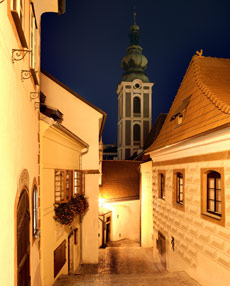
HUNGARY
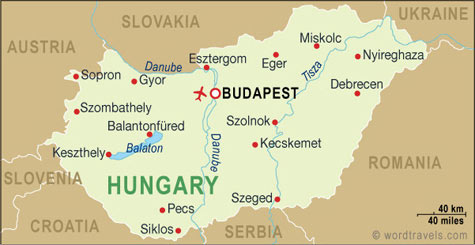
Hungary's location in the centre of Europe along with its hospitable attitude makes it one of the best places from which to embark on an Eastern European journey. It is both European and distinctly Hungarian, incorporating a mixture of history and the present-day. The country proudly upholds its Magyar traditions, culture and arts, but is attentive to what is new and fashionable in the outside world.
A small landlocked country sharing its borders with seven neighbouring countries, Hungary was originally inhabited by the Magyars, an equestrian nomadic tribe. They were eventually converted to Christianity and in the year 1000 AD their Prince Stephen was crowned the nation's first ruler. Since then Hungary has seen numerous dynastic changes, from Turkish occupation to the era of Communism, and today quaint little towns, cities and ruins in the countryside bear the marks of this turbulent history with a rich mosaic of architectural styles and fortified hilltop castles. The Hungarian people, neither Slavic nor Germanic, are formal, reserved and intensely proud of their ancient nation and its cosmopolitan capital, Budapest.
Hungary Attractions
Hungary is one of Europe’s most fascinating countries and offers a wealth of sight seeing and attractions to meet just about every tourist’s needs.
Explore Budapest, one of the world’s most beautiful cities, marvel at the architecture, enjoy the renowned operatic and music events and experience the romance of the Danube River and Budapest’s famed spa baths.
Visit Hévíz and soak in the world's second largest thermal lake, Gyógytó, visit Momento Park, one of the world’s most bizarre attractions, where hundreds of giant figures were banished at the end of the Communist era; take a trip to Szentendre for a spot of shopping, and visit the old university town of Keszthely to enjoy the quaint streets lined with trees, trendy cafés and busy markets.
The best season to visit Hungary is in the summer between April and September, when the days are long and the weather warm. Most towns and cities in Hungary have reliable and affordable public transport but the best way to see the country is to hire a car and experience it all for yourself!
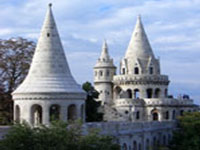 Fisherman’s Bastion
Fisherman’s Bastion
Built in 1905 on the medieval castle walls, the neo-Romanesque ramparts were so named after the city's fishermen whose duty it was to defend this side of the hill during the Middle Ages, but the existing bastion never actually served a defensive purpose. It is solely ornamental with gleaming white cloisters and stairways connecting seven turrets symbolic of the Magyar tribes that conquered the Carpathian Basin in the 9th century. Set back from the ramparts is an equestrian statue of King Stephen, a memorial to the founder of the Hungarian nation. The view from Fisherman's Bastion, over the Danube, the Chain Bridge and the Parliament Buildings with Pest stretching out into the distance, is outstanding. Floodlit at night, the bastion is a mesmerising sight from across the river.
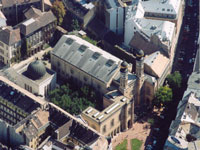 The Great Synagogue and Jewish Museum
The Great Synagogue and Jewish Museum
Situated within Erzsébet Town, the charming old Jewish quarter and former ghetto, the Great or Central Synagogue is the largest in Europe and the second largest in the world, able to seat 3,000 people. Completed in 1859 the style is typically Byzantine-Moorish, with exquisitely patterned brickwork in the red, blue and yellow colours of the city’s coat of arms. Gilded domed towers, archways and beautiful window designs are just some of the features that make this one of Budapest’s landmarks. The splendid interior glitters with lights; gilded arches and balconies line the walls, the ceiling is covered in Stars of David, and the floor is tiled in decorative stars. On Jewish festivals it is packed with Jews from all over Hungary who come to celebrate within its splendour. Next door is the Jewish Museum containing relics from the Hungarian Jewish Community, including religious objects from festivals, and the Holocaust Memorial room. In the courtyard is the Holocaust Memorial in the shape of a weeping willow tree, each metal leaf engraved with the names of Nazi victims.
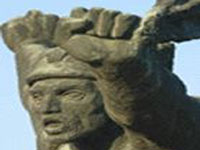 Memento Park
Memento Park
One of the city's popular but more bizarre attractions is Memento Park, containing the giant figures of the Communist era that once filled the streets of Budapest. After the change in the political system the monuments glorifying Communism were banished into the exile of this outdoor museum and among the statues, busts and monuments are the forms of Lenin, Marx and Engels, as well as memorials to the Soviet Soldiers and the Communist Martyrs. This is the only collection in the world from the time of Communist politics. Some of the interesting souvenirs sold at the park are cans of air from the 'last breath of socialism' and Stalin and Lenin shaped candles.
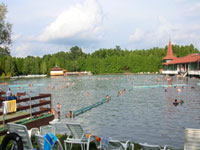 Hévíz
Hévíz
Hévíz is the site of Europe's largest and the world's second largest thermal lake, Gyógytó. It is the most extraordinary sight with its huge milky blue surface covered in water lilies and steam. The warm water wells up from a volcanic crater spring about 128 ft (40m) below the surface and provides year round swimming, although the recommended maximum time in the water during any one session is one hour. The mud on the bottom and edges is said to be slightly radioactive, good for various medical conditions, but in small doses. The complex offers indoor and outdoor swimming. A pavilion in the centre of the lake is reached by a covered bridge and indoor swimming takes place in an area enclosed with Plexiglas. Gaps in the plastic lead to the outdoor swimming area, the rest of the lake, where swimmers can float among the water lilies and swim between the 'rest' platforms bobbing on the surface.
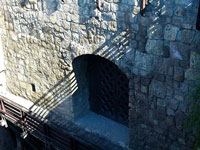 Eger Castle
Eger Castle
The medieval castle, which sits on the small hill overlooking the town, has been the site of numerous historical events. The original buildings included a cathedral and the Bishop's Palace dating from the 13th century; the castle was later fortified, the walls providing the cover for the determined defence against the Turks by a small and outnumbered army. The women who fought alongside the soldiers claimed their place in national consciousness during this much-celebrated historical event. The Dobó István Fortress Museum, in the restored Palace, is one of the most popular museums in Hungary and has exhibitions on the history of the town and castle. Also within the castle grounds is the Heroes' Hall, which holds the grave of the celebrated leader, Dobó István, as well as the Prison Museum, Waxworks, and the underground, rock-hewn artillery enclosures. The best views of the town are from the castle walls.
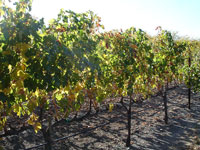 Szépasszony Valley (Valley of the Pretty Woman)
Szépasszony Valley (Valley of the Pretty Woman)
The beautiful valley with its rolling vineyards and century-old cellars and taverns is a favourite attraction in Eger. Wine producers welcome visitors into their quaint old cellars, hollowed out of the porous rock hundreds of years ago, where some of the country’s finest red wines can be tasted, including the unique Bull’s Blood. Legend has it that the name Bull’s Blood originated from the times of Turkish occupation when, forbidden to drink wine by their religion, the soldiers told their officers that they were drinking bull’s blood to make them strong for battle. The rows of cellars are numbered and each has a particular charm, whether it is the sociable owner, the chequered tablecloths of an underground tavern or the wooden barrels of fermenting grapes in the uneven rock passageway. It is possible to visit, by prior arrangement, the 'Istenes Pince' or Godly Cellar, the oldest historic cellar in the region. It operated as a secret church during the Turkish occupation and the stone altar and religious work of art still remains.
 Keszthely
Keszthely
Keszthely is a pleasant university town that has a life of its own outside the tourist season. It has trendy cafes, tree lined streets and a busy market area with strings of peppers and garlic decorating the stalls beside old fashioned weighing scales. Its most important sight is the Festetics Palace, the residence of the wealthy Festetics family with over 100 rooms. The Helikon Palace Museum and Library are in one of its Baroque wings. Keszthely is the best town on Lake Balaton from which to explore the surrounding area, including the nearby Kis-Balaton nature reserve, excellent for bird watching, and the thermal lake at Hévíz.
 Szentendre
Szentendre
Szentendre, 'The Pearl of the Danube Bend', is a quaint old market town situated on the slopes of the Pilis range, with a charm and character of its own. Meandering cobbled lanes, little squares, red-tiled roofs, brightly painted houses, and awkwardly positioned Orthodox churches give it an artistically picturesque setting. Serbian refugees inhabited the town in medieval times and their style contributed to the charisma of the town's haphazard structure and Balkan flavour. Numerous Serbian churches add to the collection of historical buildings. In the 1900s the town became a favourite retreat for painters and sculptors and ever since it has been known for its art and artists, resulting in a wealth of museums and art collections scattered among the tourist souvenir and handicraft shops. Being close to Budapest, the town has become one of the hotspots of tourism, and summer weekends can get rather overcrowded.
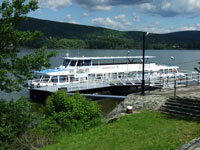 Visegrad
Visegrad
Superbly situated on the abrupt loop of the Danube beneath steep hills, Visegrad was once a Roman stronghold on the border of the Roman Empire and the second home after Buda to Hungary's royalty in the 14th and 15th centuries. The Citadel sits high on the hill above the town with commanding views over the river bend and the position was of strategic importance to the Romans. On the banks of the river are the ruins of the magnificent palace, one of the finest ever built in Hungary, which is now the open air King Matthias Museum. Today the small, sparsely populated town has a pleasantly lethargic atmosphere that belies its past glory and importance and it makes a peaceful excursion from the crowds of the big city.
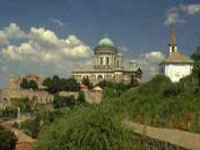 Esztergom
Esztergom
Esztergom combines history with a small-town riverside charm. One of Hungary's most historically important towns, it was the capital for over 250 years and the birthplace of their beloved first king and saint, Stephen, who was later crowned here in the 11th century. Today it remains the religious centre of the country with Hungary's largest church dominating the hill above the town next to the ruins of the medieval Royal Palace, now the Castle Museum. The colossal basilica was the first cathedral in the country and from where Roman Catholicism was introduced to the nation. It offers wonderful views from its enormous dome and contains a crypt and priceless treasury collection. Below is the pretty Watertown District with uneven cobbled streets winding up the hill towards Castle Hill and several interesting museums. Esztergom faces Slovakia across the Danube and there is an international ferry crossing here.
Public Holidays
2009 |
2010 |
|
New Year's Day |
1 Jan |
1 Jan |
Anniversary of 1848 uprising against Austrian rule |
15 Mar |
2 Apr |
Easter Monday |
13 Apr |
5 Apr |
Labour Day |
1 May |
1 May |
Whit Monday |
1 Jun |
24 May |
National Day |
20 Aug |
20 Aug |
Republic Day |
23 Oct |
23 Oct |
All Saints' Day |
1 Nov |
1 Nov |
Christmas Day |
25 Dec |
25 Dec |
Boxing Day |
26 Dec |
26 Dec |
Airport
Budapest Ferihery International Airport (BUD)
Location: The airport is located 10 miles (16km) south east of Budapest.
Time: GMT +1 (GMT +2 between the last Sunday in March and the Saturday before the last Sunday in October).
Contacts: Tel: +36 1 296 9696.
Transfer between terminals: The terminals are close enough together to be accessible by foot.
Getting to the city: The nearby Western Railway Station is walkable from terminal 1 where railway tickets can also be bought between 9am and 10pm for US$1.30. Travel time is 30 minutes to the city centre. An airport bus leaves for the Köbánya-Kispest metro terminal from terminals 1 and 2 and costs US$1.75 on the bus although previously purchased tickets are US1.30. There is an airport minibus service that takes passengers to any destination in the city as soon as the bus is full. Tickets can be purchased in the Arrivals Hall at the Airport Minibus counter or at Tel: (+36-1) 296-8555 and cost US$13. Taxis can be reserved at Tel: (+36 1) 365 55 55 or at the arrivals terminal. Fares are metered but can't exceed prices according to city zones and range between US$7.50 to US$23.80. A high speed road connects to the airport to the city in 20 minutes.
Car rental: Car rental companies include Avis, Budget, Hertz, Sixt, Europcar and Airport Rent-a-Car.
Airport Taxis: Taxis can be reserved at Tel: (+36 1) 365 55 55 or at the arrivals terminal. Fares are metered but can't exceed prices according to city zones and range between US$7.50 to US$23.80. A high speed road connects to the airport to the city in 20 minutes.
Facilities: Facilities include ATMs, bureaux de change, left luggage, first aid, duty-free shops, childcare, post office, chapel, restaurants, tourist information and hotel reservations. There are facilities for disabled passengers and wheelchairs are available from the airport help desks; travellers with special needs are advised to contact their airline or travel agent in advance. A short walk from Terminal 2 there is an open-air aircraft museum.
Parking: Short and long term parking lots are situated close to the terminal buildings.
Departure Tax: Included in the airfare.
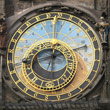
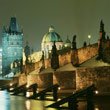
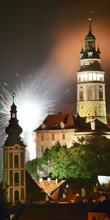
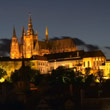
TRAVEL INFO |
|
©2006-2007 Rener Group. All rights reserved |
||
